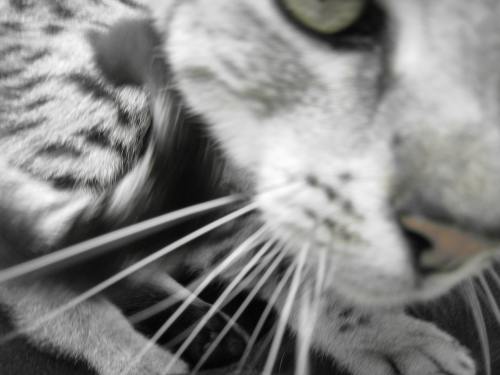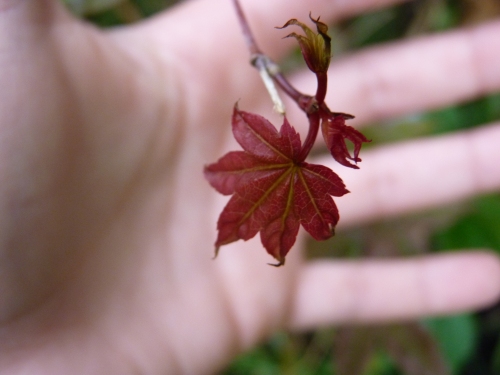Posts Tagged ‘Surrey’
Globesnap: Hello kitty… England, UK
Posted in Uncategorized, tagged cat, cute, England, kitten, kitty, pet, photo, Surrey, UK on October 13, 2012| Leave a Comment »
Globesnap: Leaf in Spring, Woking, Surrey
Posted in Uncategorized, tagged England, garden, globesnap, Ianthe Butt, photo, Photography, Photos, red leaf, spring, Surrey, Travel, travel photo, travel photography, travel photos, tree, UK, Woking on September 25, 2012| Leave a Comment »
Globesnap: Water on Cobwebs, RHS Wisley, England
Posted in Uncategorized, tagged cobwebs, England, globesnap, Ianthe Butt, photo, Photography, Photos, RHS, Surrey, Travel, travel photo, travel photography, travel photos, water, Wisley, Wisley Gardens on September 21, 2012| 4 Comments »
Beekeeping at Blackhorse Apiaries
Posted in Uncategorized, tagged bee, beekeeper, beekeeping, bees, beginner beekeeping, Blackhorse Apiaries, Flowers, honey, honeycomb, Ianthe Butt, John Hamer, Michael BAtty, Photos, queen bee, Surrey, Woking on August 9, 2011| Leave a Comment »
“The only reason for making a buzzing noise that I know of is because you’re a bee…
 And the only reason for being a bee that I know of is making honey…
And the only reason for being a bee that I know of is making honey…
And the only reason for making honey is so as I can eat it.”
~ WINNIE THE POOH
For many Brits and honey-lovers including myself, the words ring true. Most people see bees as honey-making machines whose spoils we slather across toast and munch on with no idea of their real importance.
Recently, bees have become celebs: column inches cover the decimation of populations by the pesky varroa mite and smoothies offer you free packets of bee-friendly wild flower seeds to encourage them into your gardens.
When bees dart from flower-to-flower feeding on nectar
they transfer male pollen to the female part of the plant which fertilises it. Meaning the plant can produce fruit and seeds.
Consequently, every time you bite into an apple, plum or nibble on a handful of almonds, bees have played a part in producing them.
Scientists estimate that we rely on pollination from bees for almost a third of our foodstuffs in one way or another.
It was high time to see what all the buzz was about so I joined beekeeper Michael Batty on week 9/12 of the Blackhorse Apiaries’ annual beekeeping class. This class, married with a 12-week theoretical course , aims to equip the complete beginner with all the skills needed to run their own hive.
“Two million eight hundred live here” he says as we turn sharply into a nigh-on empty car park in the outskirts of Woking.
Thank goodness we’re talking bees not people, as otherwise finding a parking space could have been a little more challenging.
A mIsH mAsH of city workers, architects and students we step into suits. My vision becomes crisscrossed with a mesh veil, gloves cover my hands and even though I’m now officially ‘bee proof’ I’m a wee bit nervous.
Kitted up, we collect a hive tool (metallic prising device), an egg timer, empty box and clipboard as well preparing a smoker can, stuffing the inside with a mix of crumpled up paper and dry grass which when lit and compressed produces puffs of smoke.
Trousers tucked firmly into boots we walk towards the hives, a band of beekeepers clad somewhat like astronauts.
A low humming fills the air, bees pause centimetres in front of my veil and wander across my glove. Straight away I show myself up as a novice by placing myself in front of the entrance to the hive.
Within minutes my trousers take on a life of their own, swarming with busy worker bees returning to the hive to deposit precious pollen from the sacs on their back legs. I was standing smack bang in the middle of their flight path.
Prior to opening the hive we release a few puffs of smoke into it, wait for two minutes (hence the egg timer).
The smoke mimics a woodland fire and the bees think they will have to evacuate, and sup on as much honey and nectar as possible. With their attention focussed on gathering up their supplies we’re able to inspect the frames.
Full of honey, the bees are less inclined to get aggravated and sting you. Michael points out small grubs (known as brood) curled up in the hexagonal comb. As well as brood, there are also store cells – supplies of honey which are capped with beeswax once full to keep the honey fresh.
Systematically the group members take it in turns to inspect each honeycomb covered frame and check that there is enough space between each frame.
If placed too close together (approx 1/8 of an inch) bees will be too cramped and unable to use that frame.The majority of the 50,000 bees in this colony are all-female worker bees, which have the ability to sting with the aid of their adapted ovipositor. The hive is only home to a few hundred harmless male drone bees that are darker, smaller in size, devoid of a stinger and exist only to fertilise the queen bee’s eggs when required.
Hive deemed healthy and slotted back together, it was a time of great excitement as after 12 weeks of theory and 9 weeks of practical beekeeping the time had come for the students to take control of their very own nuc hive – a starter colony with a few frames containing some brood, a queen and workers.
One of the group opened up his nuc to find a beekeeper’s dream – plenty of bees, some brood cells and alongside the wooden frames a slat of wild honeycomb oozing with honey.Despite the air being thick with milling bees – we couldn’t resist unzipping our beekeeping hoods to sample the runny sWeEt NeCtaR straight from the hive.
‘What could be more satisfying than eating a giant honeycomb sandwich from your own hive of bees?’ one student asked.
After taking a bite, my mouth full with gooey, sticky, fresh honey
I had neither the ability nor the inclination to disagree.
For more details visit the Blackhorse Apiaries website.
©Ianthe Butt 2011
This text has been adapted and reworked from an article originally written for Daisy Green Magazine.
Britain in bloom: RHS Wisley Gardens
Posted in Uncategorized, tagged beauty spot, Day out, England, flora and fauna, Flowers, glasshouse, Ianthe Butt, Insects, nature, Park, photograpy, Photos, plants, RHS, Royal Horticultural Society, Sunshine, Surrey, walking, wildlife, Wisley, Wisley Gardens, Woking on August 3, 2011| Leave a Comment »
I’ve been visiting Wisley Gardens in Surrey for as long as I can remember.
 There’s nothing quite like it …
There’s nothing quite like it …
Peaceful corners
where you can sit,
stare at the greenery
and watch the world go by.
A million and one pathways to explore
leading to Secret Gardens,
JaPaNeSe PaGoDaS
and
a thousand shades of green…
carpet the ground
Bees
BuZZ BuZZ
BuZZzzzz in the air

SUMMER HAS ARRIVED
©Ianthe Butt 2011
Britain in Bloom
Posted in Uncategorized, tagged Britain, England, Explore, Flowers, Photography, Photos, Sunshine, Surrey, Travel, Woking on April 27, 2011| 6 Comments »
As much as I love to get away and jump on a plane at every given opportunity, being in the middle of a masters and rather broke means that most days I only venture as far as my back garden in Surrey.
 These last couple of weeks the mini heatwave we have been having has coaxed all of the flowers in my garden out and its awash with colour.
These last couple of weeks the mini heatwave we have been having has coaxed all of the flowers in my garden out and its awash with colour.  One of my favourite things about spring in England is the explosion of flowers and trees into life. It manages to make me feel a little bit like I’ve escaped to a tropical paradise. Japanese red maple leaf dancing in the sun (left) and mauve anemone blanda (below).
One of my favourite things about spring in England is the explosion of flowers and trees into life. It manages to make me feel a little bit like I’ve escaped to a tropical paradise. Japanese red maple leaf dancing in the sun (left) and mauve anemone blanda (below). 

Although it might not be the same as shadow dancing on a beach in Bali, it’ll do for the time being…

Hellebore
seedpods
just about
ready
to burst.
Welsh poppy ReFleCtIoNs

























